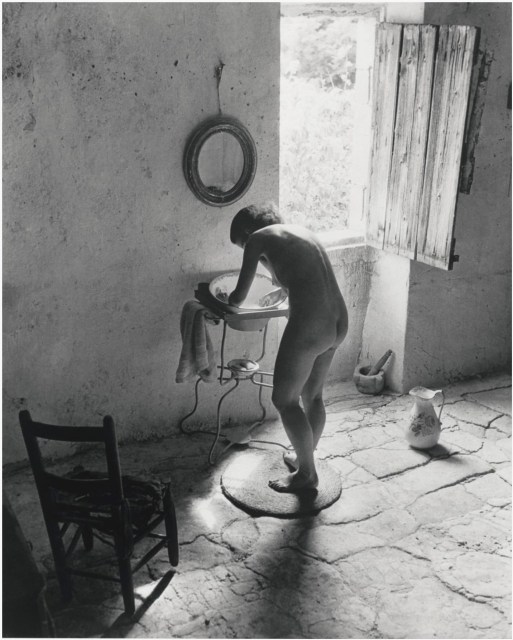Willy Ronis (1910–2009) was a master of humanist photography, capturing the soul of France through the intimate moments of its people. Born in Paris to Jewish immigrant parents, Ronis's early exposure to the photographic arts came through his father’s portrait studio. Although he initially pursued music, he returned to photography in the 1930s, driven by the desire to document social change and everyday life.
Ronis's photographs are imbued with a quiet poetry, chronicling the lives of workers, families, and children with profound empathy. His images from working-class neighborhoods, industrial sites, and bustling city streets possess a delicate balance of narrative and form. In particular, his iconic photograph Le Nu Provençal (1949), depicting his wife Marie-Anne in the sunlight of their southern French home, exemplifies his mastery of capturing fleeting moments of intimacy and warmth.
A staunch advocate for the dignity of the working class, Ronis used his camera as a means of social commentary. His commitment to humanist ideals was reflected in his affiliation with the Rapho agency and his contributions to publications like Regards and Life. His work often focused on post-war resilience, portraying the beauty and perseverance of everyday life amidst societal recovery.
Ronis's influence extended beyond his photographs. As a dedicated educator, he shared his knowledge and vision with emerging photographers, championing the importance of authenticity and emotional connection in photographic practice. His publications, including Belleville-Ménilmontant (1954) and Sur le Fil du Hasard (1980), further solidified his legacy as a visual storyteller.
Throughout his career, Ronis received numerous accolades, including the Grand Prix National de la Photographie in 1979. His works are held in prestigious collections such as the Centre Pompidou and the Museum of Modern Art in New York.
Willy Ronis's body of work remains a testament to the enduring power of photography to celebrate the human spirit. Through his tender, observant lens, he captured the beauty of life in its most unguarded moments, leaving behind a visual legacy that continues to inspire generations of photographers and viewers alike.
Famous for his black and white photos of Parisian life, Willy Ronis is considered by many to be one of the finest photographers of his generation. Some of his photos have been synonymous with Paris and post war Provence. These include: a boy running with a baguette under his arm, lovers caressing while looking over the Paris skyline, people walking along a Paris bridge on a rainy evening and his most famous photo, and a nude photo of his wife bathing on a warm summer afternoon using a basin. Together with Robert Capa, Henri Cartier-Bresson and Brassai, Ronis established what is now considered postwar humanist photography. This school of photography focused on capturing the beauty and grace of everyday life, thus showing that photography could be an art form in its own right as opposed to the mechanical capture of events. Paul Ryan says, “Although he is not as well known as Doisneau and Cartier-Bresson, among photographers he was always regarded as a master. It is very hard to go through one of his books and find a bad photograph. His sense of proportion, his framing of an image was exquisite.”
© Cigdem Mirol
